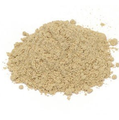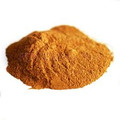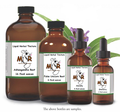 Loading... Please wait...
Loading... Please wait...- Home
- Bulk Herbs
- Herbs (G-H)
- Goats Rue Powder C/O
- Home
- Herbs - Certified Organic
- G-I
- Goats Rue Powder C/O
Goats Rue Powder C/O
Product Description
Goats Rue Powder
Also Known As -Galega officinalis
Origin: Poland, Certified Organic
Overview - Goats rue is native to Europe and the east coast of North America, although it has been found as far east as Japan. It grows in most soil types. In some places, it is considered invasive. The plant grows spikes of pea-like flowers that range in color from white to lavender. There may be up to 200 flowers per plant. The plant will fix nitrogen into the soil, which can benefit plants growing nearby. This herb has been used medicinally since at least the Middle Ages, and was used at that time to treat the plague.
Medicinal Uses - Goat's rue is used to treat intestinal worms, relieve fevers and to cure snakebite. It helps nursing mothers increase milk production. It also has potential as a treatment for diabetes, as it lowers blood sugar levels. While it is not used instead of normal diabetic remedies, it is recommended in the early stages to help control symptoms. It is also diuretic. Native Americans used this herbal remedy as an aphrodisiac and to treat impotency. They also used it to restore health and beauty to women.
Other Uses – Goat's rue was first used to increase milk production in goats and cattle. It also has a compound in it that is a natural cheese rennet and will clot milk for the cheese-making process. It has also been used as fodder for livestock. It was once used as a shampoo to prevent loss of hair. The root of the plant is the source of the insecticide "rotenone" that is often used against flying insects.
Herbs to Combine/Supplement - Goat's rue can be combined with fenugreek to make a formula to lower blood sugar.
Parts Used - Flowers, leaves, seeds, stem – The flower, leaf, seed and stem are all used from the plant.
Precautions - Goat's rue may interact with diabetes medications that control blood sugar, so do not take it at the same time without your physician's knowledge.
Suggested Preparation and Dosage - An infusion can be made by steeping a teaspoon of dried herb in a cup of boiling water. Let the herb steep for 10 to 15 minutes, then strain the liquid and allow it to cool before drinking. Taking this infusion twice a day is the normal recommendation. For a tincture, a dose of 1 to 2 ml can be taken three times per day.
Disclaimer -These products are not intended to diagnose, treat cure or prevent any disease. Reviews are not intended as a substitute for appropriate medical care or the advice of a physician or another medical professional. Actual results may vary among users. Mountain Maus Remedies LLC makes no warranty or representation, expressed or implied, as to the accuracy or validity of the information contributed by outside product review submissions, and assumes no responsibility or liability regarding the use of such information. The information and statements regarding the dietary supplements have not been evaluated by the Food and Drug Administration. If you have a medical condition or disease, please talk to your health care provider. If you are currently taking a prescription medication, you should work with your health care provider before discontinuing any drug or altering any drug regimen, including augmenting your regimen with any herb or dietary supplements. Do not attempt to self-diagnose any disease or ailment based on the reviews and do not use the information contained herein for diagnosing or treating a health problem or disease. Proper medical care is critical to good health. If you have a health concern or suspect you have an undiagnosed sign or symptom, please consult a physician or health care practitioner.
















